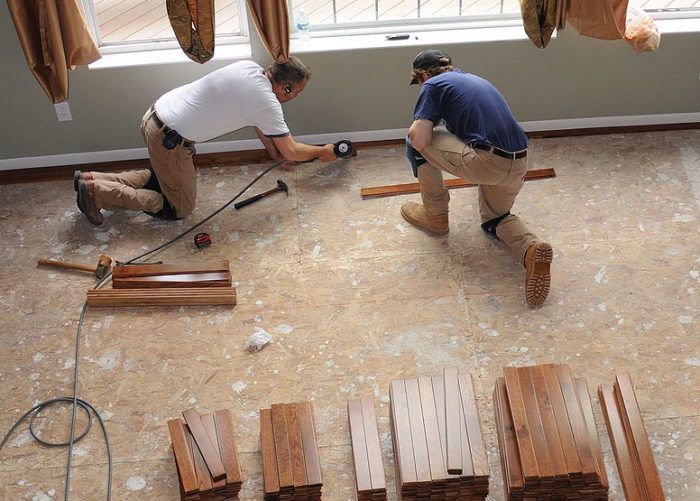Self-Taught MBA: Controlling Subcontractor Price Creep
Subcontractor price creep can add significant costs to your operations, not all of which you can easily pass onto your customer. You need strategies to keep subs from eating up your profits.

If you’re like many of us, you prefer to work with familiar subcontractors that provide high quality work, and reliable service. Subcontractors perform the vast majority of construction work nowadays, somewhere between 77% and 84%, according to economists at the National Association of Homebuilders (NAHB).
In this scenario, subcontractor price creep can add significant costs to a builder’s operations, not all of which you can easily pass onto your customer.
Breaking Down Price Creep
Although the national inflation rate remains historically low, currently at 0.8%, the rebound in housing has put upward pressure on materials and especially subcontractor pricing, which now outstrips overall inflation nearly tenfold, with OSB, for example, going up 20% since February of this year.
But compared to subcontractor price increases, materials are easy to deal with. For one, building material suppliers price their goods competitively, working on very small margins. Builders won’t hesitate to shop for the best material prices, and hence the downward pressure on building material pricing. Subcontractors, on the other hand, have significantly higher markups, and they package materials and labor into their bids, so it’s more difficult to shop around. As a builder, you don’t know exactly how much of the subcontractor’s price reflects material costs and how much for labor.
It’s also easier to specify material characteristics, and hence their quality, than to control for the quality of labor. Shopping around for a better subcontractor prices comes with risk of buying lower quality workmanship for the lower bid.
The upward pressure on subcontractor demand is especially hard to square with the fact that homebuilding has not recovered to the levels enjoyed in 2005-2008. According to the NAHB, today’s subcontractor shortage is substantially higher than it was at the peak of the 2004-2005 boom, when annual housing starts were averaging around 2 million, compared to current rates of about 1 million. Economists at the NAHB speculate that former owners of small construction businesses are now returning to the market, but instead of working on their own, they are signing on as employees for larger companies, improving the availability of workers directly employed by subcontractors, while making the availability of subcontracting firms worse.
The Consequences
Of course, there exists a limit to the price increases that you can pass onto consumers. High prices drive customers away, especially when the housing and home improvement sectors remain so far out of alignment with the broader price index. Consumer wages have not gone up, and neither have the costs for basic goods and energy, remaining virtually stable at 0.8%. But subcontractor rates skyrocketed an average of 5.03% during the last six months, and they keep climbing. This makes bidding jobs based on historical cost data very difficult, and hence pricing new projects very risky.
When you consider that the NAHB Eye on Housing Survey found that 66% of homebuilders have had to pay higher subcontractor costs, but only 61% were able to pass it onto their customers, and fully 26% of homebuilders report their jobs were not profitable, you realize who’s getting squeezed — you, the homebuilder!
Price Pressure-Relief Valves
We’re all good guys and gals, and we agree that everyone should make a good living. Nonetheless, it’s imperative to control subcontractor pricing.
One way to do this comes through competitive bidding. Get your plans and specs perfected so there’s little room for argument about how you want things built, and then expand your stable of subs. In some areas, subs have so much work that they won’t bid competitively. Some companies have started to pay subs for the time it takes them to sharpen pencils and develop a tight, accurate price. This small, upfront cost may be worth it, if you can then regain the investment with better pricing and new subcontractor relations.
Other companies – in fact, 31% of homebuilders answering the NAHB survey – have imported lower cost subcontractors from other geographic areas, presumably where there’s not so much work. I’ve done this, but not with good results. The distance often strains subs, and what started as, “I’ll do whatever it takes to get the job,” soon becomes, “Man, I’m not making any money.” Quality suffers, and the relationship sours.
I do bid projects, but only to a small stable of subs, two or three per trade, and find this an effective method to control pricing without adding the risk of new relations on every project.
If you do repeated projects that have nearly identical characteristics, such as spec homes, basic bath remodels, or simple additions, you could create a year-long contract with fixed unit prices. I have done this when I built the same spec houses again and again, and it made budgeting easy, and contracting simple by generating work orders for each job instead of subcontracts. In case you think this approach impossible, consider that insurance companies do exactly this with repair contractors, and it works very well.
Another way involves a little negotiation. In exchange for your loyalty as a construction services broker, you could require your subs to breakdown the material and labor costs, so that subs can pass on material price increases with transparency. Subs tend to round up, so that if supplies go up 3.4%, they will increase their overall price by 5%, creating an artificially high cost increase. After all, subs are not suffering higher energy, and basic goods inflation, so if you negotiate a net-net increase for actual inflation, your sub remains protected and you don’t get gouged.
You may argue with me about supply and demand. And I will concede that, but the flip side of loyalty between subcontractors and homebuilders comes with the flip side of the economic cycle. When the tables turn, you’ll remember the subs that treated you right when you needed them more than they needed you. And you’ll forget the rest.
Finally, the approach that has worked best in my business has been collaborative price setting. Subcontractors have proximity to suppliers and labor. Working with subs to spot potential areas of cost increases on an ongoing basis, and identify value engineering alternatives to mitigate the increases, not only helps you control your budget, but helps subs remain competitive with all their builder clients. I actually provide an incentive, too, we split the savings when a sub brings me a value engineering solution I can use. This means I pay less for the job, or at least reduce the coming price increase, while my sub gains a slightly better margin on his markup.
Perhaps you have a price-pressure relief-valve you would share with the rest of us?
Photo credit: “Installing a Hardwood Floor – Construction,” by Scott Lewis (slightly cropped), used with thanks under a Creative Commons 2.0 license.



























